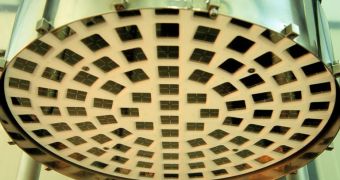An international collaboration of scientists, led by experts at the Columbia University, announced at a workshop on May 1 that their dark matter detector failed to confirm the discoveries previously made by other research groups. The XENON100 Experiment is the most sensitive dark matter detector ever created, and the team managing it features more than 36 physicists from nine institutions and research organizations around the world. However, the team mentioned at the conference that chances were high in detecting the elusive stuff, thought to make up about 83 percent of all matter in the Universe, as well as a significant portion of the masses of all galaxies, PhysOrg reports.
“Dark matter particles continue to escape our instruments, yet we are getting much more clever in our search and feel confident that we will soon unveil them,” Columbia University professor of physics Elena Aprile says. She is also the spokeswoman for the dark matter experiment. According to the official, the XENON100 team has already produced a scientific paper detailing the results of their verifications studies, which researchers have already submitted for publication to the highly-regarded journal Physical Review Letters.
The new data this detector collected cast doubts on two previous investigations, which both reported having discovered signs of dark matter. The first was the University of Rome TOR Vergata, Italy-based DAMA/LIBRA collaboration, which argued that it had found signs of the stuff in 1997. The second one came in February 2009, from the University of Chicago-led CoGeNT collaboration. The XENON100 data seems to invalidate both previous results, in a finding that is bound to ruffle a few feathers. Over the past decade or so, the hunt for dark matter has become a highly-competitive field, with many research groups developing increasingly-advanced equipments to aid them in their search.
The Columbia University experiment uses ultra-pure liquid xenon, because it is one of the heaviest chemicals in the Periodic Table. Buried some 5,000 feet underground, inside the Gran Sasso Underground Laboratory, Italy, the experiment consists of a xenon layer placed between two massive cameras, which can detect weakly-interacting massive particles (WIMP), the class of particles thought to make up dark matter. “Liquid xenon is a precious and wonderful material for catching and studying WIMPS,” Aprile concludes.

 14 DAY TRIAL //
14 DAY TRIAL //